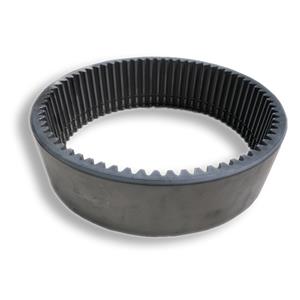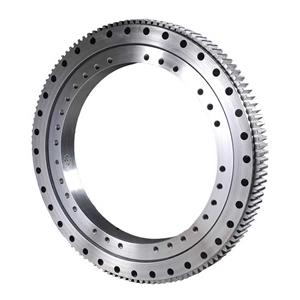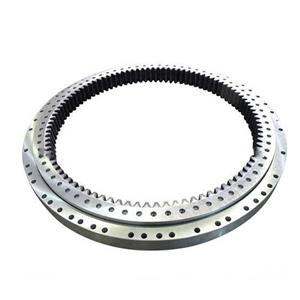Methods to solve the noise of slewing bearings
Methods to solve the noise of slewing bearings
Two common solutions to slewing bearing noise include dust sound and scratch sound as follows:
(1) How to control dust sound
If there are dust and other foreign objects in the rotary branch, non-periodic vibration will occur. The so-called dust sound, the magnitude of the vibration and noise is variable, and may or may not exist.
Methods to control dust noise: Improve the cleaning method of slewing bearings/turntable bearings. Strictly clean the bearings, shafts, seat holes and matching parts before installation; remove foreign matter in the lubricant; improve the sealing of the bearings; avoid using impure materials Or a plastic cage with foreign matter embedded in it.
(2) How to control scar sound
If there are cracks, indentations or rust on the rolling surface of the slewing bearing, periodic vibration and noise will occur like riveting rivets. The period may be fixed but mostly corresponds to the rotational speed. The scars will continue on the channel. occurs, the scars will appear and disappear on the steel ball, and this noise will change to a certain extent with the installation and lubrication conditions. Methods to control this type of noise: do not knock the bearing during installation, prevent the bearing from being installed tilted when assembling the bearing with the shaft and then installing it into the bearing seat; prevent bearing rust during storage and shock and vibration during transportation; use high viscosity grease .
(3) Noise caused by lubrication factors and countermeasures Wrong selection of lubricant, insufficient lubricant or aging and hardening can cause vibration and noise in slewing bearings/turntable bearings, and this noise has no certain rules. In this case, the only way is to select a suitable lubricant, adjust its lubricant amount, extend the service life of the lubricant and reasonably determine the replacement cycle.
(4) Host-related noise and countermeasures
This kind of noise is not simply caused by the bearings, so it is ineffective to find the cause solely from the bearings. The host should be fully paid attention to, and the performance of the host should be improved if necessary. Now we mainly describe the common buzzing sounds and frame resonance sounds in motors. A. The buzzing sound of the motor and its countermeasures. The axial vibration of the motor shaft will cause a large high-frequency noise - buzzing sound. Its frequency is the same as the axial vibration frequency, and it can be constant or changing. The method to prevent buzzing is the same as that to prevent axial vibration. B Bearing frame resonance sound and countermeasures When the aforementioned axial natural vibration of the outer ring mass system causes the axial bending natural vibration of the bearing frame, a type of noise called resonance sound will be generated. The method of increasing preload can increase the axial natural frequency of the outer ring mass system, destroy the resonance conditions, and reduce noise.




